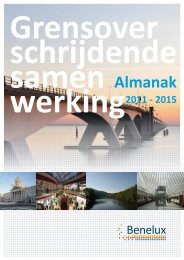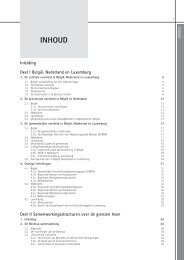The North Seas Countries' Offshore Grid Initiative - Initial ... - Benelux
The North Seas Countries' Offshore Grid Initiative - Initial ... - Benelux
The North Seas Countries' Offshore Grid Initiative - Initial ... - Benelux
Create successful ePaper yourself
Turn your PDF publications into a flip-book with our unique Google optimized e-Paper software.
Approach adopted<br />
<strong>The</strong> process adopted by WG1 to develop the grid designs is essentially the same as the<br />
one used by TSOs to plan their own internal grid enhancements, although it may differ in<br />
some of the detail. This is best shown by the figure below:<br />
Figure 0-2 General Procedure divided into logical steps<br />
<strong>The</strong> NSCOGI study presented a unique opportunity to collect the ten countries’ views of<br />
generation and load in the year 2030 to create a Reference scenario (the details of which<br />
are set out in Appendix A 2). This data was combined with technical parameters and IEA<br />
fuel and CO prices to carry out market analysis to simulate the expected amount of<br />
2<br />
generation produced by each fuel type and investigate the expected import/export<br />
position of each country and associated CO emissions. In this way the potential for<br />
2<br />
increasing trading capacity between countries can be investigated, although this<br />
investigation only assesses the additional cross border capacity that might be supported<br />
by market analysis alone, and therefore does not yet represent an investment plan.<br />
Network design and analysis were then carried out to investigate the physical behaviour of<br />
the grids, based on the technical parameters of the region’s electricity grid. Selection of<br />
candidate investments was optimised to reinforce the grid to meet the market needs<br />
derived from the 2030 generation and load scenario (including connection of new offshore<br />
generation). Optimised outline grid designs were confirmed as viable and refined with<br />
more targeted grid and market simulations.<br />
A final market analysis explored and what benefits might arise in terms of reduced 2030<br />
production costs as a result of the grid expansion strategies proposed in the previous<br />
stages. A comparison of the costs and benefits is also carried out at this stage.<br />
Page 1-3










